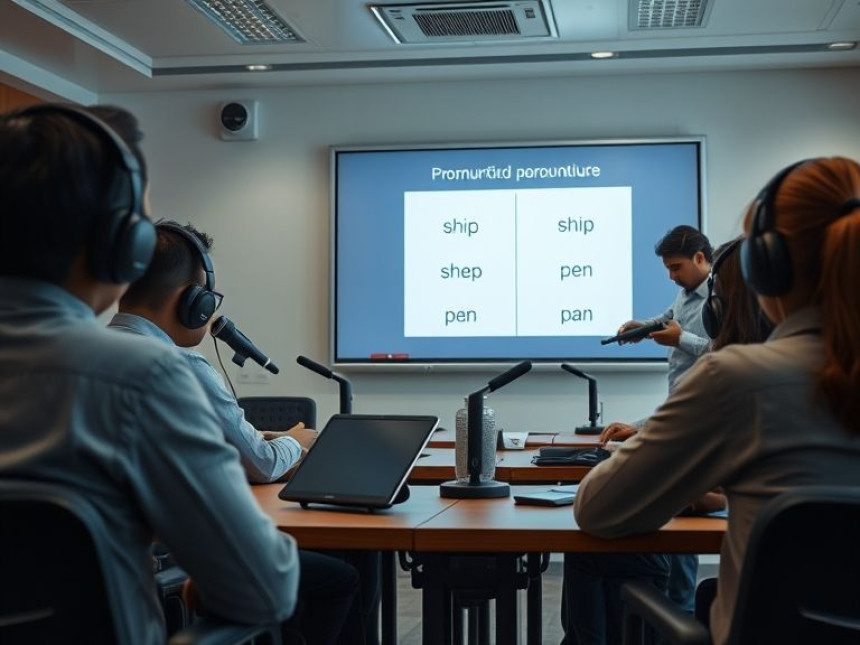
Token Standards: ERC-20 and ERC-721 Explained — Step-by-Step
Token Standards: ERC-20 and ERC-721 Explained — Step-by-Step. Get practical lessons and hands-on examples at AI Computer Classes in Indore to master blockchain skills quickly. Ideal for beginners and working professionals seeking fast skill gains. This article from AI Computer Classes Indore breaks down token standards: ERC-20 and ERC-721 explained — step-by-step into actionable steps. Includes references to tools like ChatGPT, Power BI, Excel, Figma, or Python where appropriate.
🔗 Token Standards: ERC-20 and ERC-721 Explained — Step-by-StepUnderstanding token standards is essential for anyone building on Ethereum or EVM-compatible blockchains. Two standards dominate the space: ERC-20 (for fungible tokens) and ERC-721 (for non-fungible tokens — NFTs). This step-by-step guide from AI Computer Classes — Indore explains both standards, shows example Solidity code, highlights best practices, and gives practical tips for developers and product teams. Whether you’re a beginner or a working pro, this article helps you build, test, and deploy tokens with confidence. 🚀
Token standards define a common interface so wallets, marketplaces, and dApps can interact reliably with tokens. Without standards, every token would behave differently — user experience and integrations would be chaotic.
Key benefits:
- Interoperability: Any ERC-20 token works with exchanges and wallets that support ERC-20.
- Predictability: dApps can read token data and call functions in a uniform way.
- Ecosystem support: Tools like Metamask, OpenSea, and decentralized exchanges understand token standards.
Local learners in Indore building blockchain products must know these standards to ship real-world dApps and marketplaces.
💡 Learn blockchain development hands-on at AI Computer Classes – Indore!
Build real ERC-20 tokens and ERC-721 NFTs with guided labs. 👉 Join our blockchain course now! 📍 Old Palasia, Indore
🧩 ERC-20: Fungible Tokens (Step-by-Step)ERC-20 is the most widely used standard for fungible tokens — tokens that are interchangeable (like USD, INR, or ERC-20 tokens such as USDC).
✅ Core ERC-20 Functions (simplified)- totalSupply() — returns total token supply.
- balanceOf(address) — token balance of an address.
- transfer(to, amount) — move tokens.
- approve(spender, amount) — allow another address to spend tokens.
- allowance(owner, spender) — remaining approved amount.
- transferFrom(from, to, amount) — transfer using allowance.
// SPDX-License-Identifier: MIT
pragma solidity ^0.8.0;
contract SimpleERC20 {
string public name = "AI Indore Token";
string public symbol = "AIT";
uint8 public decimals = 18;
uint256 public totalSupply;
mapping(address => uint256) public balanceOf;
mapping(address => mapping(address => uint256)) public allowance;
event Transfer(address indexed from, address indexed to, uint256 value);
event Approval(address indexed owner, address indexed spender, uint256 value);
constructor(uint256 _initialSupply) {
totalSupply = _initialSupply * (10 ** decimals);
balanceOf[msg.sender] = totalSupply;
}
function transfer(address _to, uint256 _value) public returns (bool) {
require(balanceOf[msg.sender] >= _value, "Insufficient balance");
balanceOf[msg.sender] -= _value;
balanceOf[_to] += _value;
emit Transfer(msg.sender, _to, _value);
return true;
}
function approve(address _spender, uint256 _value) public returns (bool) {
allowance[msg.sender][_spender] = _value;
emit Approval(msg.sender, _spender, _value);
return true;
}
function transferFrom(address _from, address _to, uint256 _value) public returns (bool) {
require(balanceOf[_from] >= _value, "Insufficient balance");
require(allowance[_from][msg.sender] >= _value, "Allowance exceeded");
balanceOf[_from] -= _value;
allowance[_from][msg.sender] -= _value;
balanceOf[_to] += _value;
emit Transfer(_from, _to, _value);
return true;
}
}
Practical Tips for ERC-20- Use OpenZeppelin contracts in production (ERC20, ERC20Permit) to avoid common bugs.
- Keep decimals consistent and document tokenomics clearly.
- Implement mint/burn patterns carefully and restrict access using Ownable.
- Add SafeMath logic (Solidity ^0.8 has built-in overflow checks).
💡 Practice at AI Computer Classes – Indore:
We teach secure ERC-20 development using OpenZeppelin and Hardhat tests — hands-on!
🧩 ERC-721: Non-Fungible Tokens (Step-by-Step)ERC-721 defines NFTs — tokens that are unique. NFTs power digital art, certificates, and game assets.
✅ Core ERC-721 Functions (simplified)- ownerOf(tokenId) — owner address.
- balanceOf(owner) — count of tokens owned.
- safeTransferFrom(from, to, tokenId) — transfer token safely.
- approve(to, tokenId) — approve transfer for one token.
- setApprovalForAll(operator, approved) — approve operator for all tokens.
// SPDX-License-Identifier: MIT
pragma solidity ^0.8.0;
import "@openzeppelin/contracts/token/ERC721/ERC721.sol";
import "@openzeppelin/contracts/access/Ownable.sol";
contract SimpleNFT is ERC721, Ownable {
uint256 public currentTokenId;
constructor() ERC721("AIIndoreNFT", "AIND") {}
function mintTo(address recipient) public onlyOwner returns (uint256) {
currentTokenId++;
_safeMint(recipient, currentTokenId);
return currentTokenId;
}
}
Practical Tips for ERC-721- Always use safeTransferFrom to ensure the receiver can handle ERC-721 tokens.
- Store metadata (images, attributes) off-chain (IPFS) and reference via tokenURI.
- Consider ERC-721 extensions: ERC721Enumerable (listing tokens) and ERC721URIStorage (uri management).
- Pay attention to gas costs — minting many NFTs can be expensive; consider lazy minting.
💡 Hands-on at AI Computer Classes – Indore:
Students build NFT projects, host metadata on IPFS, and deploy to testnets (e.g., Goerli).
🔐 Security & Best Practices (Both Standards)- Use audited libraries (OpenZeppelin) rather than writing from scratch.
- Access Control: Use Ownable, AccessControl or role-based controls.
- Testing: Unit tests with Hardhat/Truffle and property testing are mandatory.
- Static Analysis: Run Slither, MythX, and other scanners.
- Gas Optimization: Avoid unbounded loops and large on-chain arrays.
- Upgradeability: If upgradeable, use secure proxy patterns (OpenZeppelin Upgrades).
- Limit on-chain personal data: Be mindful of privacy and GDPR-like concerns.
- IDE & Templates
- Remix for quick prototyping.
- VS Code with Solidity and Hardhat extensions.
- Libraries
- OpenZeppelin Contracts (ERC20, ERC721)
- Testing
- Hardhat + Waffle/Chai for tests.
- Write tests for transfers, approvals, and edge cases.
- Local Networks
- Use Hardhat Network or Ganache for local testing.
- Deploy
- Deploy to testnet (Goerli) first, then mainnet after audits.
- Verification & Monitoring
- Verify contracts on Etherscan.
- Monitor transactions with Tenderly or Blocknative.
- User uploads artwork; front-end pins file to IPFS → returns CID.
- Front-end calls mintTo(userAddress) on the ERC-721 contract with tokenURI pointing to IPFS CID.
- Contract mints token, assigns tokenId, stores owner mapping.
- Marketplace queries tokenURI to render metadata and image.
This flow keeps media off-chain while the token lives on-chain — efficient and standard.
- Tokenomics: For ERC-20 tokens, clear supply, distribution, and vesting schedules matter.
- Legal: Security vs utility token classification can have regulatory implications.
- Marketplaces: ERC-721 tokens work well with OpenSea and NFT marketplaces; ERC-20 tokens integrate with exchanges and DeFi protocols.
- Analytics: Track token transfers, holder distribution, and activity using on-chain analytics or export to CSV for analysis in Power BI or Excel.
💡 Build product-ready blockchain apps at AI Computer Classes – Indore!
We combine coding, tokenomics, and deployment best practices in hands-on labs.
🧭 ConclusionERC-20 and ERC-721 are foundational building blocks of the Ethereum ecosystem. ERC-20 gives you fungible tokens for currencies and utility tokens; ERC-721 provides unique, verifiable ownership for digital collectibles and certificates. Mastering these standards — with secure libraries, tests, and deployment workflows — enables you to build interoperable dApps, marketplaces, and products.
Whether you want to launch a token, build an NFT marketplace, or add blockchain features to your project, start by learning the standards, implementing small examples, and testing on testnets.
💡 Ready to learn blockchain development in Indore?
Join AI Computer Classes – Indore to build ERC-20 tokens and ERC-721 NFTs with guided projects, audits, and deployment practice. 👉 Enroll now at AI Computer Classes 📍 Old Palasia, Indore
📞 Contact AI Computer Classes – Indore
✉ Email: hello@aicomputerclasses.com
📱 Phone: +91 91113 33255
📍 Address: 208, Captain CS Naidu Building, near Greater Kailash Road, opposite School of Excellence For Eye, Opposite Grotto Arcade, Old Palasia, Indore, Madhya Pradesh 452018
🌐 Website: www.aicomputerclasses.com




Quick Tutorial: Introduction to Unit Testing in Python
Quick Tutorial: Introduction to Unit Testing in Python. Get practical lessons and hands-on...
